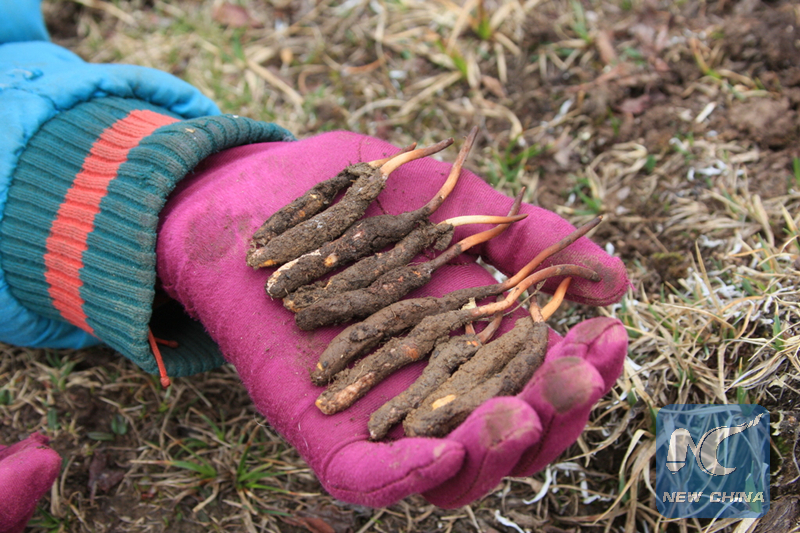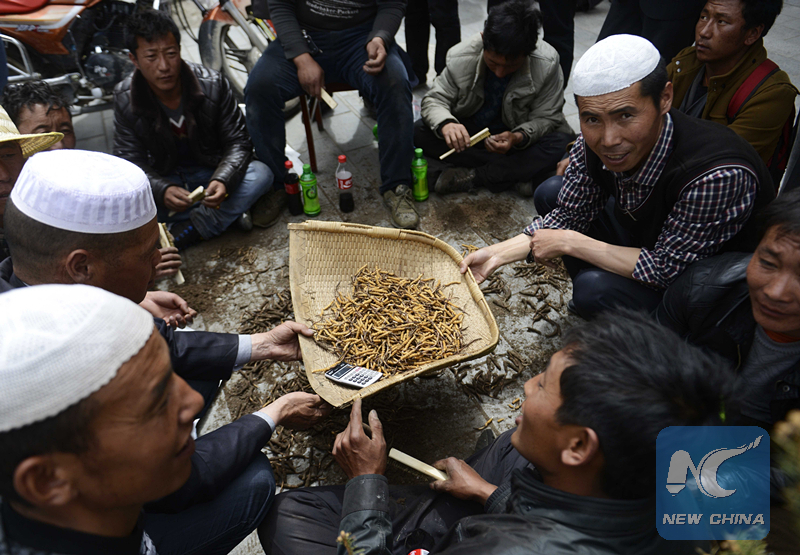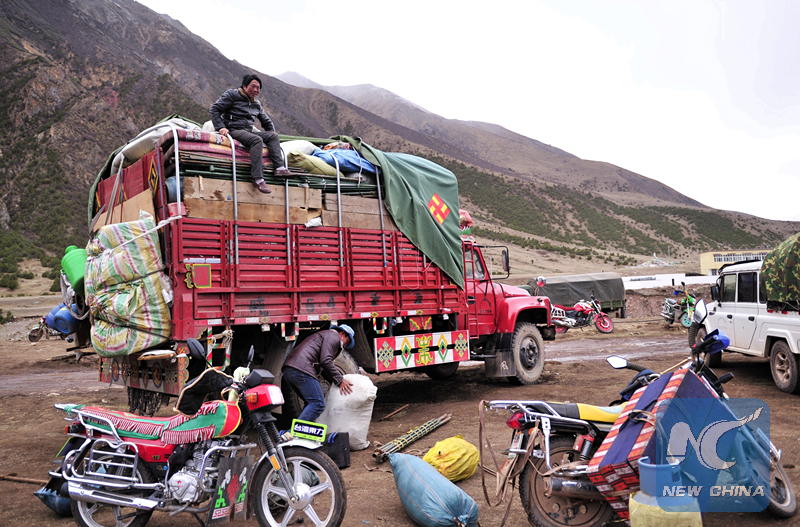
Photo taken on July 20, 2015 shows caterpillar fungus against the background of a snow mountain in Tibet Autonomous Region. (Xinhua/Chogo)
BEIJING, Aug.20 (Xinhua)-- At a grocery store in Beijing, the most commonly eaten mushrooms go for about 1.50 U.S. dollars a kilogram, while black truffles from Yunnan in southwest China cost about 470 dollars.
One gram of caterpillar fungus, however, sells for at least 12 dollars. That's 12,000 dollars a kilo.

Photo taken on Aug. 12, 2016 shows caterpillar fungus. (Xinhua/Zhang Rufeng)
The yellowish caterpillar fungus is about five centimeters long in average and weighs less than one gram, but a tiny stalk is worth more than gold even in the town nearest to the Qinghai-Tibet Plateau where it grows.

Photo taken on Aug. 12, 2014 shows caterpillar fungus. (Xinhua/Chogo)
The rare fungus is known in Tibetan as "yartsu gunbu" and in Mandarin as "dongchong xiacao", or "winter-worm summer-herb". As the name suggests, the ancient Chinese believed it could transform between herb and worm, and had the power of rejuvenation.

Photo taken on Aug. 12, 2014 shows caterpillar fungus. (Xinhua/Purbu Tashi)
This fungus actually leads a parasitic life. It hijacks and feeds off the bodies of ghost moth larvae on the plateau 3,000 to 5,000 meters above sea level.
When winter comes, the infected caterpillar burrows into the alpine soil, getting ready for the pupa stage. But the fungus is digesting it from inside.
The caterpillar, once consumed, retains its form. In the spring, the fungus erupts out of the head and spreads its spores.

Dealers from other provinces buy caterpillar fungus on Sept. 14, 2014 in Tibet Autonomous Region. (Xinhua/Chogo)
The evolution process suggests nothing delicious nor nutritious, but the fungus is a cure-all in traditional Tibetan medicine, and people believe it can help fight cancer and the aging process and boost the immune system.

Locals gather to sell caterpillar fungus on Sept. 22, 2013 in Tibet Autonomous Region. (Xinhua/Purbu Tashi)
It is a cash cow for Tibetans, who,women and children included, join the rush for the "worm herb" every year. Even schools are closed in May and June so that students and teachers can join the harvest.

Experts exam caterpillar fungus on Aug. 12, 2016 in Tibet Autonomous Region. (Xinhua/Zhang Rufeng)
People in Tibet's Nagchu even hold competitions: who can make one jin, a basic Chinese weight unit that is equivalent to 500 grams, with the fewest pieces of fungus. This year, the winner made it with 670 "worm herbs", and the single biggest weighed 1.1 grams.

The winner holds a "caterpillar fungus" trophy on Aug. 12, 2016 in Tibet Autonomous Region. (Xinhua/Zhang Rufeng)
However, digging the fungus also means environment deterioration, mostly damage to local soil. Nagchu produced no more than 20 tons of caterpillar fungus this year, less than half of last year's harvest.

Locals gather to dig caterpillar fungus on July 10, 2013 in Tibet Autonomous Region. (Xinhua/Purbu Tashi)
The fungus may die out in China in two decades, as a result of overexploitation on the Qinghai-Tibet Plateau, experts have warned.

